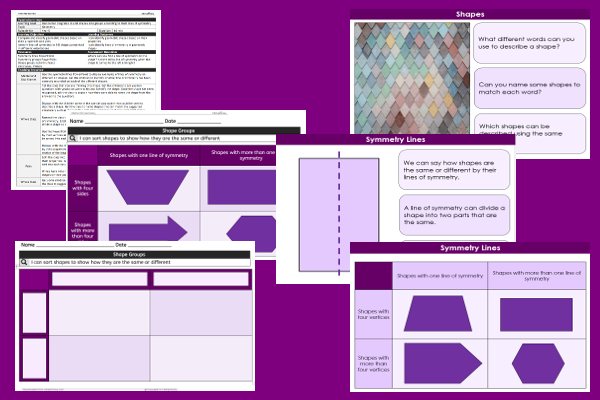Lesson Two – Symmetry Groups

This maths teaching pack for Key Stage Two gets the children to practise using Carroll Diagrams to sort and organise shapes into matching groups according to their lines of symmetry and other geometric properties.
The class can explain and describe how they can differentiate between some different 2D shapes by their individual properties including the identified lines of symmetry.
Download this teaching pack including a lesson plan, classroom activities and an interactive presentation to practise using Carroll Diagrams to sort and organise shapes into matching groups according to their lines of symmetry and other geometric properties
Activities in this teaching pack include a worksheet to record how to use Carroll Diagrams to sort shapes into groups according to some matching properties and a template to model how to differentiate between sets of shapes to illustrate their special and unique properties.
The interactive presentation gets the children to explore how to use Carroll Diagrams to sort shapes into matching groups according to their lines of symmetry.
This lesson is part of a maths scheme of work to get the children to explore, record and compare the matching lines of symmetry that can be found in a range of different geometric shapes as part of their individual properties. There are teaching activities for shared learning, differentiated worksheets to support independent learning and interactive presentations to introduce concepts and key skills.
-

World Countries
Research and add facts and information to sentences using brackets about some of the different countries that can be found around the world
-

Sports Poems
Explain and model how to compose and present poems using special line structures and rhyming patterns to illustrate actions and themes connected to different sports
-

Bonfire Party
Select and use formal and informal language to compose invitations, letters and speeches for a family and town party on Bonfire Night
-

Digit Combinations
Practise building and comparing a range of numbers by combining and matching sets of digits with different number values
